- July 19, 2023
Dog Dragging Its Paws? How to Help

Any change in your dog’s gait, the way it walks, or places its paw on the ground should be brought to your veterinarian’s attention. A dragging paw can indicate an injury or medical condition impacting a dog’s spinal cord, nerves, or mobility.
A dragging paw, also known as knuckling, may happen occasionally, only when your dog is tired, or happen every time your dog takes a step. Regardless of the frequency, if your dog is walking differently, it’s time to see the vet. When a dog’s proprioception is impaired, it’s an indication that there is an underlying health problem that needs to be addressed.
What causes a dog to drag its paw?
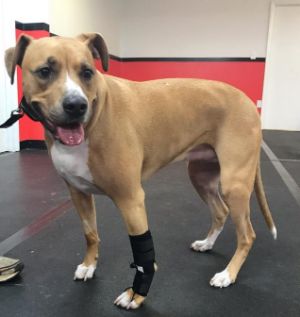
Typically, a dog will drag its paw due to an injury or condition that impacts its motor function. Some possible causes of knuckling in dogs include:
- Degenerative Myelopathy (DM)
- Spinal stroke
- Nerve trauma or injury
- Cervical Vertebral Instability (CVI)
- Intervertebral Disc Disease (IVDD)
- Neurological disorders
- Orthopedic problems
Signs of knuckling in dogs:
- Scuffing their paws while walking
- Uneven wearing of nails
- Scrapes on the back or front paw.
- Standing or walking on top of the paw
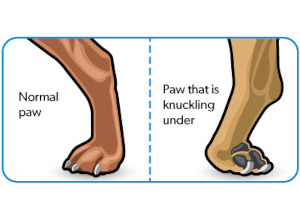
Is your dog showing any signs of knuckling? If so, it’s time to visit the veterinarian. Take note of your dog’s symptoms, how often the occur, and any other changes in your dog’s gait. The more information you can provide your veterinarian, the better.
What do I do first?
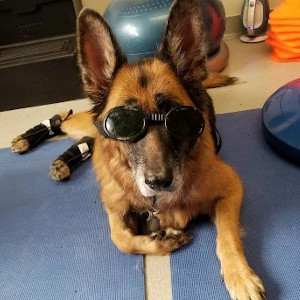
If your dog is dragging its paws, it needs to be seen by a veterinarian. Your vet needs to examine, diagnose, and treat your dog. After you know the cause and best way to help your dog, ask your vet about canine rehabilitation.
A rehab specialist will work with your dog to manage your dog’s knuckling. Depending on your dog’s diagnosis, a CCRP will work your dog through therapeutic exercises to help manage, lessen, or even stop your dog’s dragging feet.
Assistive devices to aid dragging paws
A No-Knuckling Training Sock is a great training tool to help improve a dog’s paw placement. Available for the front or back leg, the No-Knuckling Training Sock can be used for 2 to 5 minutes to stimulate a dog’s withdrawal reflex and teach them how to place their paw correctly.
Benefits of the No-Knuckling Training Sock
- It’s Lightweight – most dogs that drag their paws also experience some leg weakness, using lightweight materials the training sock will help your pet without weighing them down.
- Offers Joint Support – each training sock features elastic straps that sit above and below the joint, this offers additional joint support as your dog exercises.
- Enhances proprioception – the sock encourages your dog to lift its foot up off the ground while walking.
Conclusion
To help your dog that drags its front or back paw, speak to your veterinarian, put in the time with a canine rehab specialist to improve your dog’s paw placement, and get a No-Knuckling Training Sock.
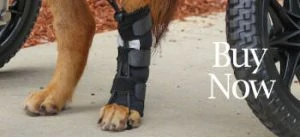
Related Articles:
Tags
What do you think?
Related Articles

New Puppy Checklist: Gear You’ll Need for Your New Dog
Getting a new puppy is really exciting, but before you welcome them home, it’s important to prepare your space for them. Since puppies need a
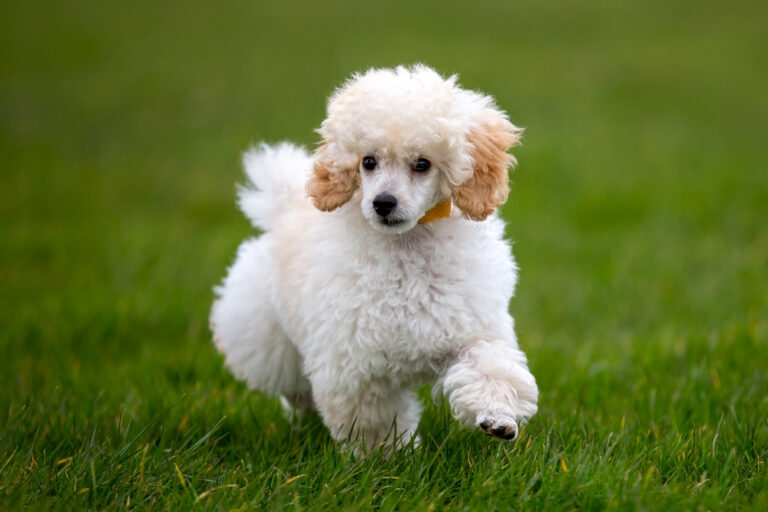
How Big Do Mini Poodles Get? Vet Reviewed Average Weight & Growth Chart – Dogster
The information is current and up-to-date in accordance with the latest veterinarian research. Learn more » When you buy a Miniature Poodle, you might not

Can Police Dogs Smell Nicotine? Vet Verified Facts & Info – Dogster
The information is current and up-to-date in accordance with the latest veterinarian research. Learn more » While cigarette sales have been declining steadily for decades,
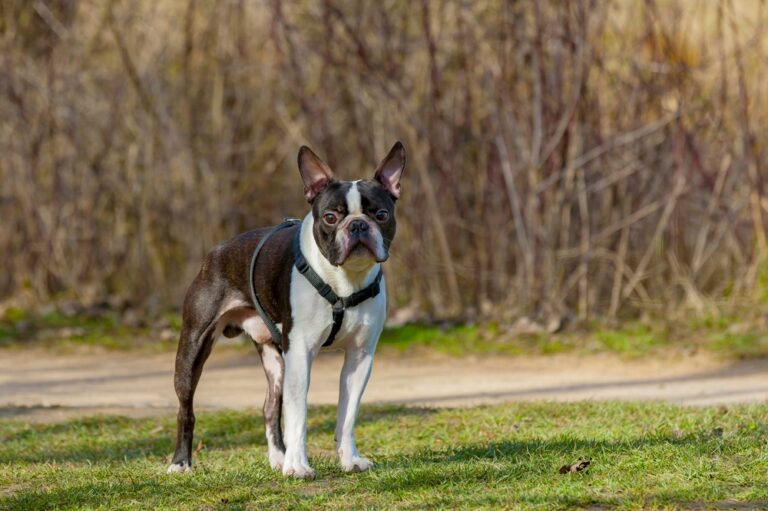
How Old Is 5 in Dog Years? Vet-Approved Guide to Each Size of Dog – Dogster
The information is current and up-to-date in accordance with the latest veterinarian research. Learn more » A common method for calculating a dog’s age is

